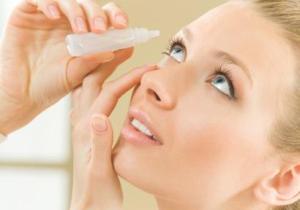Also called allergic conjunctivitis or ocular allergy, eye allergy occurs when something you are allergic to irritates the conjunctiva. This is the delicate membrane covering the eye and the inside of the eyelid.
Like all allergies, allergic conjunctivitis starts when the immune system identifies an otherwise harmless substance as an allergen. This causes your immune system to overreact and produce antibodies called Immunoglobulin (IgE). These antibodies travel to cells that release chemicals which cause an allergic reaction. In this case, allergic reactions include eyes that water, itch, hurt or become red or swollen.
The most common causes of allergic conjunctivitis are seasonal allergens such as pollen and mold spores. People with seasonal allergic rhinitis (hay fever) normally notice their symptoms worsen when they go outdoors on days with high pollen counts.
Indoor allergens such as dust mites and pet dander can also cause eye allergies year-round. If you suffer from this type of allergy, you may notice your symptoms worsen during certain activities such as cleaning your house or grooming a pet.
Eye allergy symptoms can be very annoying. Yet they pose little threat to eyesight other than temporary blurriness. Unlike conditions such as pink eye, allergic conjunctivitis is not contagious.
However, red, itchy, burning and puffy eyes can be caused also by infections and other conditions that can threaten eyesight. If your symptoms are related to an eye allergy, chances are you will have problems in both eyes.
Typical symptoms include: • Watery eyes • Itchiness • Sensitivity to light • Redness • Grittiness • Eyelid swelling
These symptoms can occur alone or along with allergic rhinitis nasal symptoms. They typically appear shortly after exposure to the allergen. Symptoms resulting from seasonal outdoor allergens tend to be worse than if your symptoms are due to indoor allergens such as dust mites or pet dander. Symptoms may be reduced if you are taking allergy medications such as antihistamines, which suppress the allergic reaction. If dust or pet allergic, use a vacuum with a HEPA filter to reduce dust in your home or try keeping pets out of the bedroom to reduce exposure to their dander.
If pollen and other seasonal allergens are causing your misery, here are a few helpful suggestions:
- Wear a hat with a wide brim to reduce the amount of allergen that blows into the eyes.
- Sunglasses can also help reduce the amount of allergen that lands in the eyes.
- Apply saline eye drops to the eyes after being outdoors to wash away allergens from the ocular lining.
Over-the-counter antihistamine pills and eye drops are often used for short-term treatment of eye allergy symptoms. However, prolonged use of some eye drops may actually make your symptoms worse. Your doctor may prescribe stronger medications if your symptoms are long-lasting. Corticosteroid eye drops are effective, but they often have side effects, even when used only for a short time. Use of this medication should be managed by an ophthalmologist due to the risk of side effects, such as glaucoma (increased ocular pressure), cataracts and infection.
Depending on what is causing your eye allergy symptoms, immunotherapy (allergy shots) can be very effective in providing long-term resistance to the triggering allergens.
The first step toward relief from annoying eye allergy symptoms is a proper diagnosis. An allergist / immunologist has specialized training and experience to accurately determine what is causing your symptoms and identify the best treatment approach that can help you feel better and live better.
Article provided by: www.AAAAI.org

